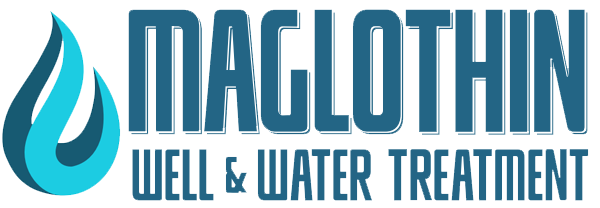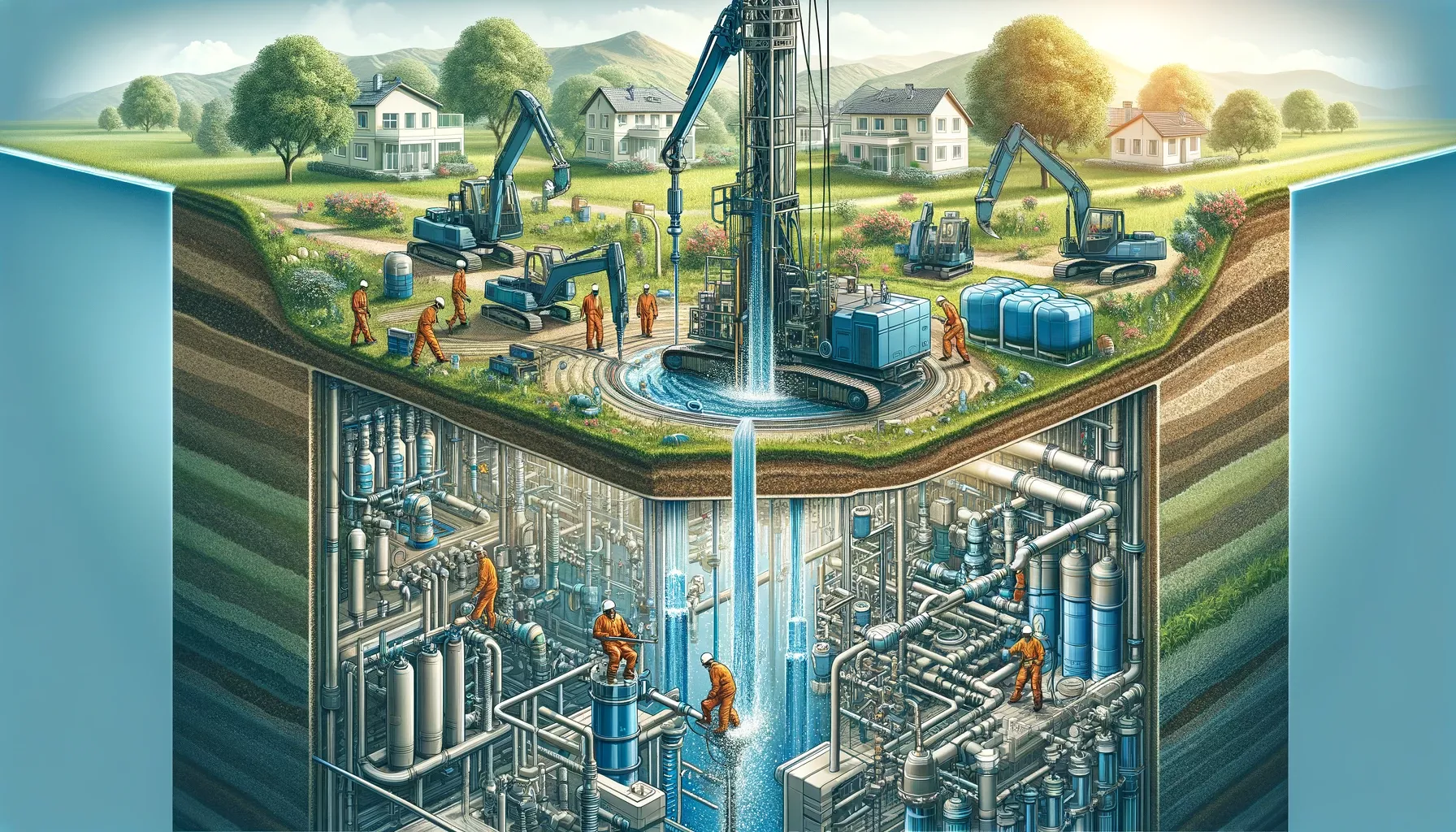The Comprehensive Guide to Well Drilling: Costs, Processes, and Benefits in 2024
In the quest for clean, reliable water sources, well drilling has emerged as a crucial solution for many, especially in rural or off-grid locations. As we step into 2024, understanding the nuances of well drilling - from costs and processes to choosing the right well company near you - becomes imperative. This extensive guide covers everything you need to know about well drilling, including the latest on well water treatment systems.
Understanding Well Drilling and Its Costs in 2024
Well drilling is the process of excavating the earth’s surface to access underground water reservoirs. The cost of drilling a well can vary widely based on several factors, including location, depth of the well, type of terrain, and the materials used. In 2024, the average cost of well drilling is estimated to range from $15 to $30 per foot, with most residential wells costing between $3,500 and $15,000 in total. These costs can be higher in areas with challenging geological conditions or lower groundwater levels.
What to Know Before Drilling a Well
Before embarking on a well drilling project, there are several key factors to consider:
Local Regulations and Permits: Different regions have specific regulations governing well drilling. It’s essential to understand these and obtain the necessary permits.
Site Selection: The location for drilling a well is critical. Factors like the proximity to septic tanks, the topography of the land, and potential contamination sources need to be considered.
Water Availability and Quality: Assessing the local water table depth and water quality in the area helps in determining the feasibility of drilling a well.
The Well Drilling Process Explained
Well drilling involves several stages:
Site Assessment and Preparation: This involves surveying the land and preparing the site for drilling.
Drilling: Using a drilling rig, a hole is bored into the ground to reach the water table. The depth depends on the geological conditions and water table depth.
Casing and Capping: To prevent contamination and collapse, the well is lined with a casing and capped.
Pump Installation: A pump system is installed to draw water from the well.
Drilled Wells vs. Dug Wells: Why Choose Drilled?
While dug wells have been traditional, drilled wells offer several advantages:
Deeper Access to Water: Drilled wells can reach deeper water tables, providing more reliable water access, especially in areas with fluctuating water levels.
Lower Contamination Risk: Due to their depth and casing, drilled wells are less prone to contamination compared to shallow dug wells.
Longevity: Drilled wells typically have a longer lifespan and require less maintenance.
Finding a Well Drilling Company Near You
Maglothin Well & Water is the number one choice covering Oakland, Washtenaw, Genesee Counties in Michigan. But if you are reading this outside of our service area, choosing the right well drilling company is crucial. Look for companies with good reputations, proper licensing, and experience in your specific geographic area. Utilizing online searches with keywords like “well drilling near me” or “well company near me” can help in finding local experts.
Well Water Treatment Systems
Once a well is drilled, ensuring the water is safe for consumption is crucial. This is where well water treatment systems come in. These systems can include:
Sediment Filters: To remove suspended particles.
UV Purification: To kill bacteria and viruses.
Water Softeners: To address water hardness.
The Benefits of Well Water Treatment Systems
Health and Safety: They ensure the water is free from harmful contaminants.
Improved Water Quality: Treatment systems can enhance the taste, odor, and overall quality of well water.
Appliance Longevity: Treated water is gentler on home appliances, extending their lifespan.
Maintaining Your Well and Water System
Regular maintenance of the well and water treatment system is essential for ensuring water quality and system longevity. This includes periodic testing of water quality, regular inspection of the well and pump system, and maintenance of the water treatment system.
The Future of Well Drilling and Water Systems
With advancements in technology, well drilling, and water treatment systems are becoming more efficient and environmentally friendly. Innovations in drilling equipment, water testing, and purification methods are making well water a more viable option for an increasing number of people.
Well drilling offers a sustainable solution for accessing clean water, especially in areas not served by municipal water systems. The key lies in understanding the process, costs, and maintenance requirements. With the right approach and expertise, drilling a well can provide a reliable and long-term water source. As we progress through 2024, staying informed and choosing the right professionals for well drilling and water treatment systems becomes crucial in ensuring access to safe and clean water.
Innovations in Well Drilling
The field of well drilling has seen significant advancements, particularly in drilling techniques and equipment. Rotary drilling, a method that is more efficient and quicker than traditional cable tool drilling, has become the norm. Innovations like hydraulic drilling rigs and advancements in drilling bits have made the process more efficient, even in challenging geological conditions.
Impact of Climate Change on Well Drilling
Climate change poses new challenges for well drilling, especially in regions experiencing altered rainfall patterns and groundwater levels. In response, well drilling practices are evolving to ensure sustainable water extraction that doesn’t deplete aquifers, incorporating environmentally responsible practices.
The Role of Geologists and Hydrologists
In well drilling, the expertise of geologists and hydrologists is invaluable. These professionals conduct geological surveys and hydrological assessments to determine the best locations for wells and to predict the yield and sustainability of the water source.
The Process of Obtaining Permits
Obtaining the necessary permits for well drilling can be a complex process, involving local, state, and sometimes federal regulations. These permits ensure that the well is drilled in a location that’s safe and environmentally sound, and that it meets all health standards.
Well Drilling and the Community
In many communities, especially in rural areas, well drilling can be a community-led initiative. Grouping together for a community well can be cost-effective and ensures a uniform approach to water access and treatment.
Water Testing and Health Safety
Regular water testing is essential to ensure the safety and potability of well water. Tests typically check for bacteria, nitrates, pH levels, and other contaminants. If any contaminants are found, specific water treatment systems can be installed to address these issues.
The Economics of Well Drilling
Investing in a well can be economically beneficial in the long term. Despite the upfront costs, the ongoing savings on water bills can be substantial. For those living in areas without municipal water supply, a well is often the most feasible and cost-effective option for water access.
Choosing the Right Pump System
The pump system is the heart of a well, and choosing the right one is crucial. Submersible pumps are popular for their efficiency and reliability. The size and type of pump depend on the well’s depth and the household’s water needs.
Water Storage Solutions
In addition to the well itself, proper water storage solutions are important. This might include pressure tanks or larger storage tanks, which ensure a consistent supply of water and help manage the well’s yield.
Sustainability and Environmental Stewardship
Sustainable well drilling involves practices that do not harm the environment or deplete water resources. This includes responsible water consumption and adhering to environmental guidelines and best practices in drilling and maintenance.
Emergency Preparedness and Well Drilling
Having a well also means being prepared for emergencies. This includes having backup power solutions, like generators, to ensure water access during power outages, which is particularly important in areas prone to natural disasters or severe weather.
Well Drilling and Real Estate Value
A well can add value to a property, especially in areas where water access is a challenge. Properties with a reliable, clean water source are often more desirable in the real estate market.
Educating Well Owners
Education is key for well owners. Understanding the workings of their well, how to maintain it, and how to detect and address issues ensures the longevity and safety of their water supply.
The Future of Water Treatment Systems
Looking ahead, water treatment systems are becoming more sophisticated. Technologies like reverse osmosis, ion exchange, and advanced filtration are becoming more accessible to residential well owners, ensuring safer and cleaner water.
In 2024, well drilling remains a vital solution for accessing clean water. Understanding the nuances of well drilling, from the initial costs and processes to long-term maintenance and the integration of water treatment systems, is crucial. With climate considerations and technological advancements shaping the future of well drilling, homeowners and communities can look forward to more efficient, sustainable, and reliable water access solutions. As the need for sustainable water sources grows, well drilling and water treatment systems stand out as critical components in ensuring safe, clean, and reliable water for all.

